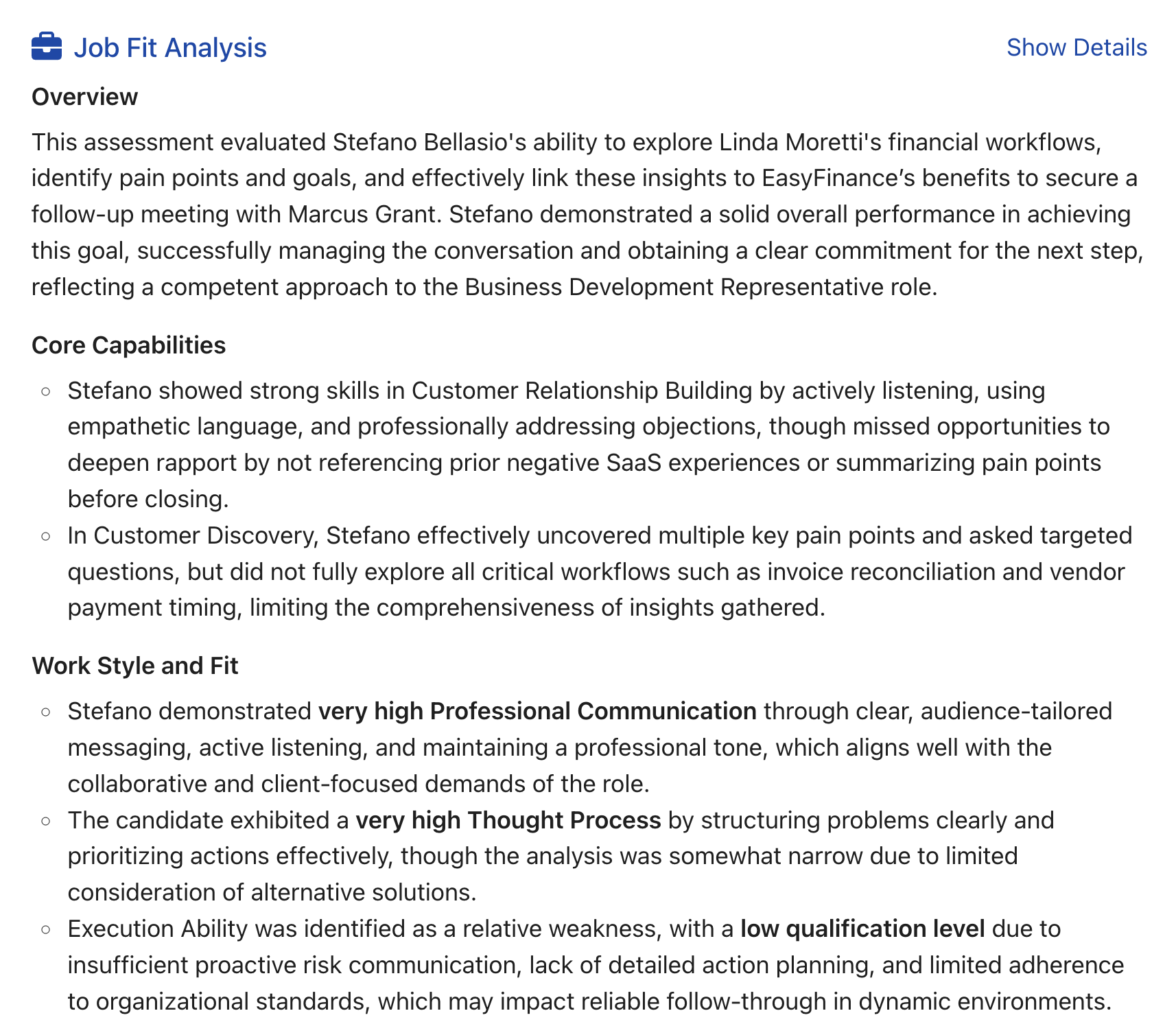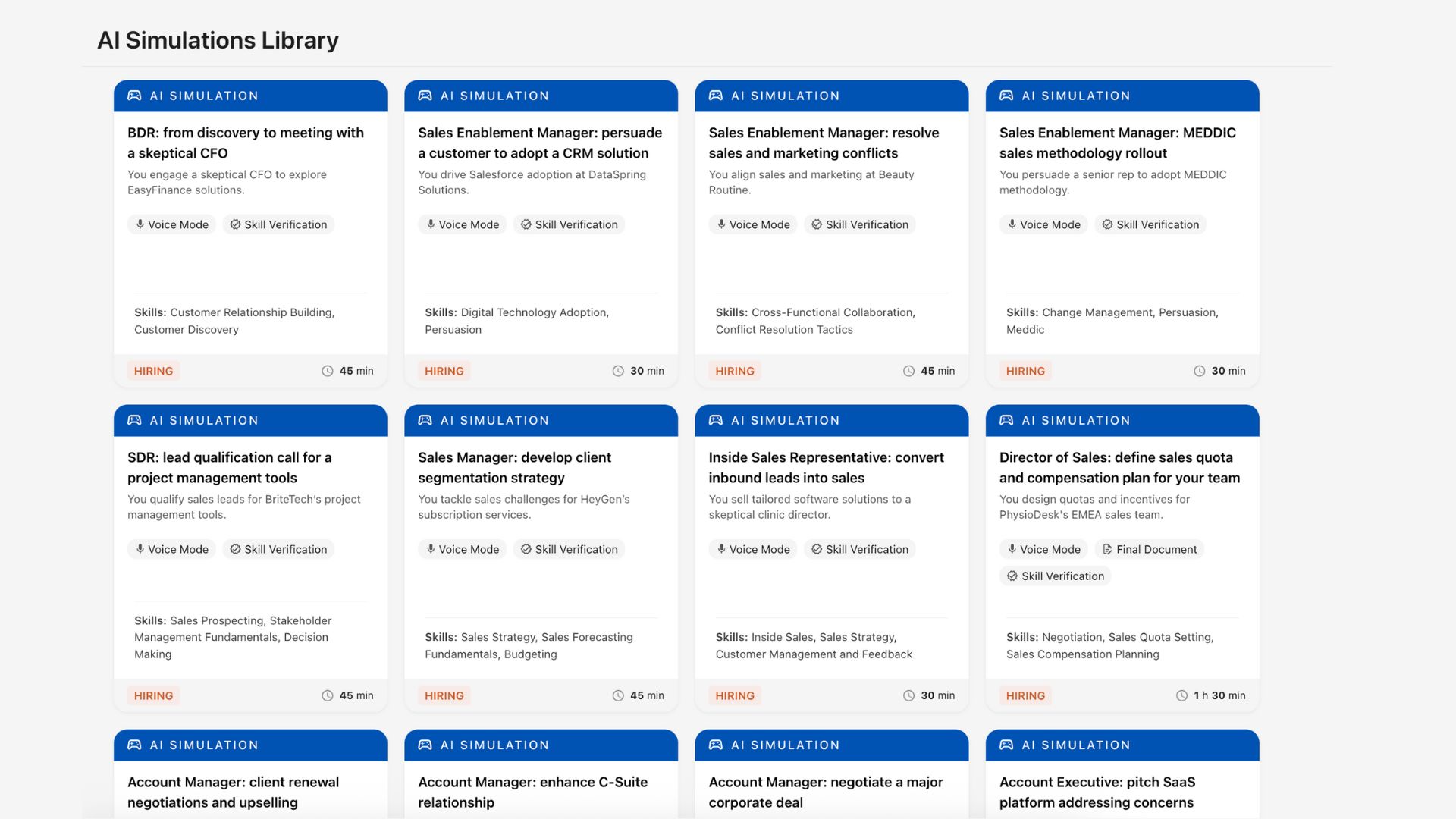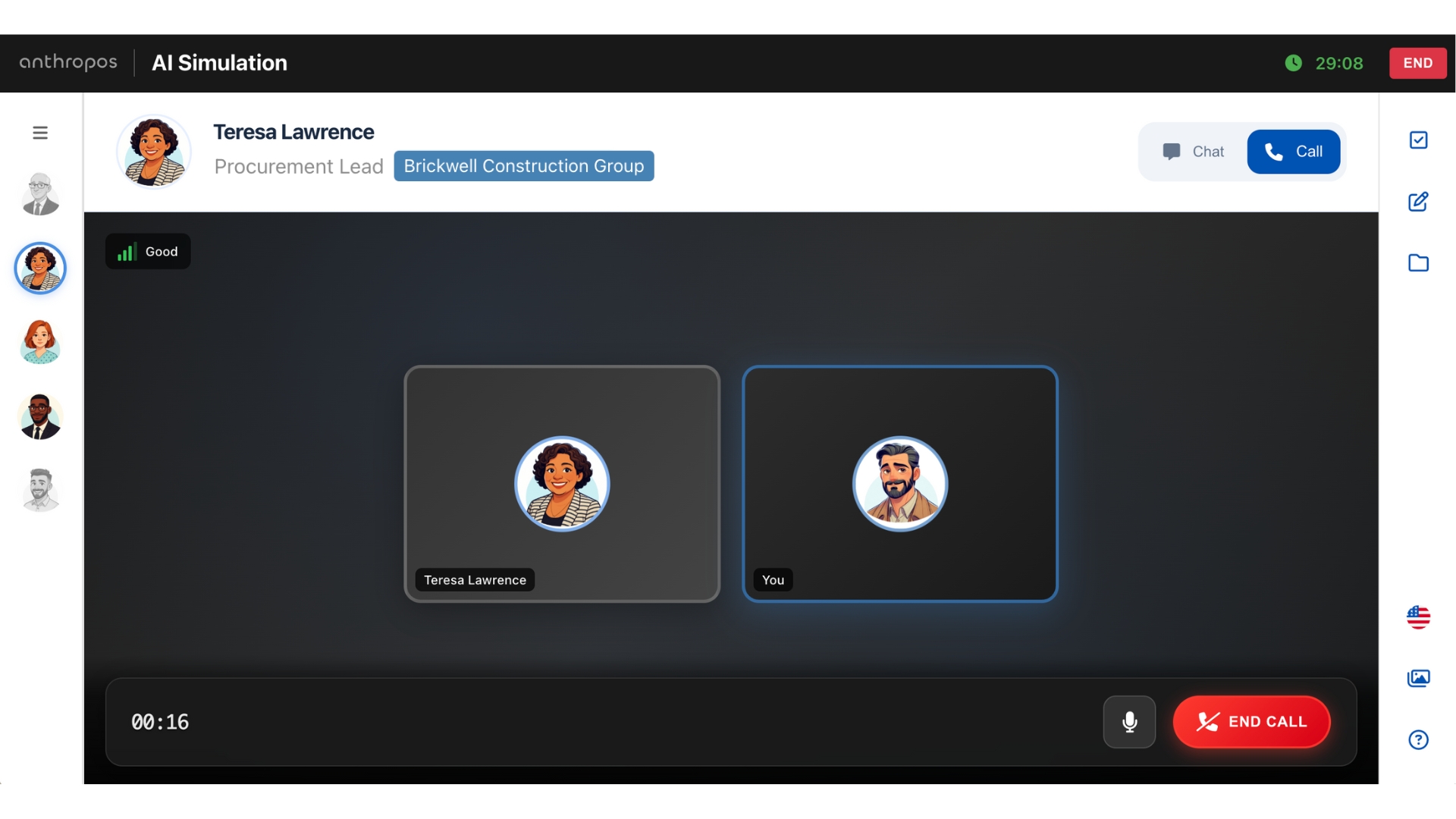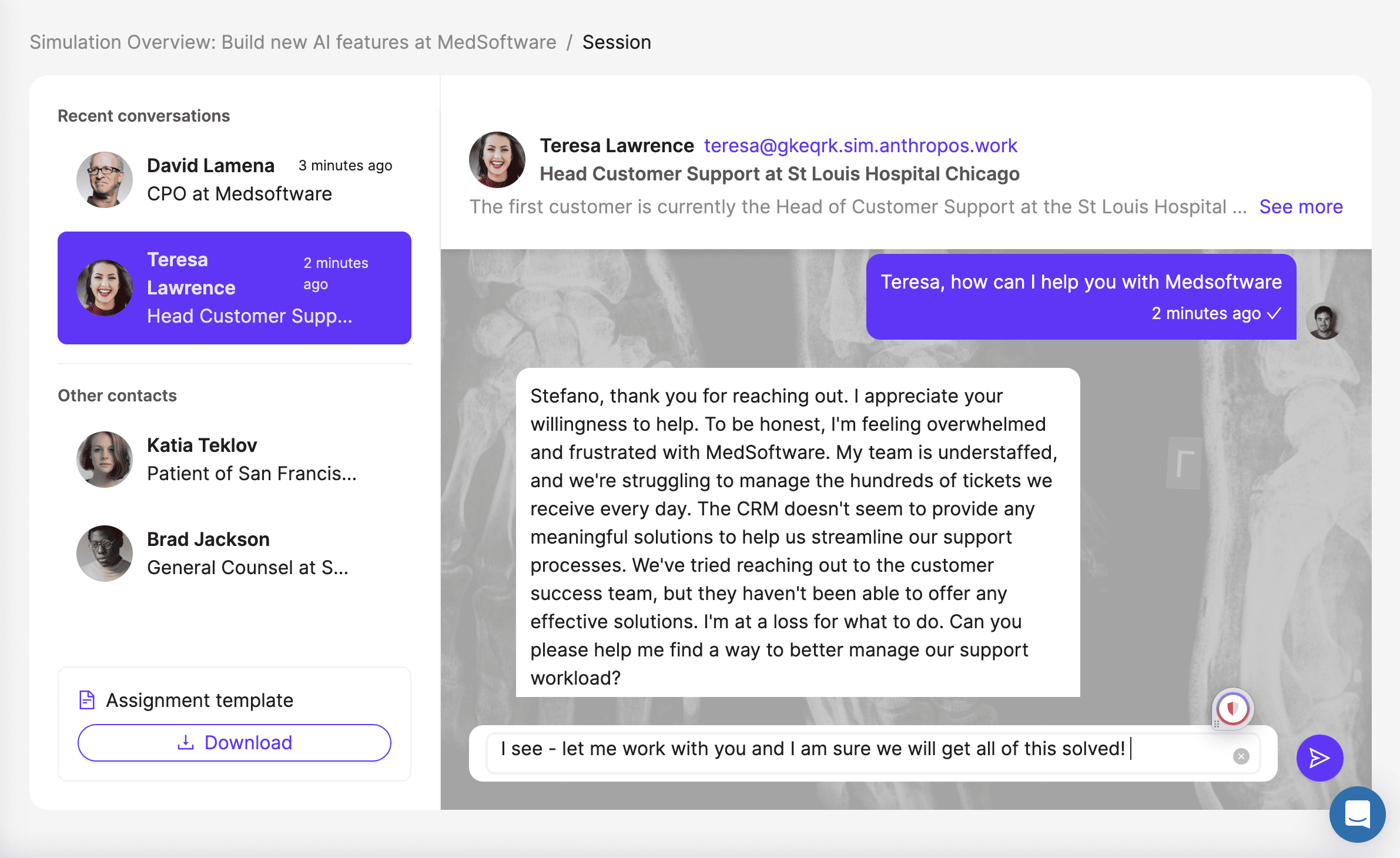Skills-based Hiring: a Modern Approach to Grow your Future Workforce
By Stefano Bellasio
11 min read
Introduction: how will this guide benefit me?
We are writing this guide primarily for HR professionals who find themselves doing their best every day to find great talent. It’s also for hiring managers and business leaders feeling the pressure of finding the right people for their business. In our experience, every company leader, sooner or later, faces a shortage of skills for specific positions and struggles to achieve more in his team or company due to a lack of specific skills.
Contents
1
2
4
5
6
I hope this guide gave you an understanding of how skills-based hiring can help you
Save money and time in your recruiting process
Help you get to a larger and more diversified pool of candidates
Show you the real skills and abilities of each candidate, giving you thoughts about the ability to hire someone that has just 80% of what you need and can learn the rest on the job
This guide will help you understand how to migrate your hiring to a skills-based approach, how to interact with managers and leaders within the organization to prioritize skills as you search for new talent, and how to start considering tools and software to aid your organization in using skills for every new position you seek.
The ultimate goal is to help you fill positions, saving both time and money, through skills. Skills-based hiring achieves this by encouraging you to consider talent that might have been overlooked if you were only using previous titles or experience as criteria.
In a world where jobs are continuously evolving, skills remain the only consistent metric for identifying exceptional talent. In some cases, you might find talent possessing 70% of the skills you require. The remaining skills can be developed within your organization. This shift in mindset is essential in a world where a skills shortage is a real challenge.
Lastly, this guide is designed to be practical. I am leaving behind much enterprise and HR jargon, focusing instead on what works and what doesn’t, offering you actionable advice.
Adopting skills in your hiring process requires both time and vision. Don’t expect overnight changes. However, once implemented, it’s one of those strategies that can significantly accelerate your business.
Needless to say this is what we help companies with at Anthropos – this guide doesn’t talk about our solution, but if you want to learn more about our platform, you can book a demo with us here.
Who is this guide for and how skills-based hiring affects your role
I envision two audiences benefiting from this guide:
- HR and L&D professionals of any level and company size. Skills and skills-based hiring will inevitably become essential for medium to large companies (200+ employees).
- Business leaders building/managing teams of 10 people and above. If you are a Director, VP, or C-level executive, this guide is even more vital, given that your workforce will likely be extensive.
Both these audiences play a pivotal role in advancing their companies by hiring new talent and selecting the right fit. Both face similar challenges: the available talent pool doesn’t meet the demand for positions, making the hiring process both challenging and costly.
If you’re an HR professional, this guide will help you understand why skills-based hiring is becoming increasingly effective and how to start implementing it in your daily role. If you’re a business leader, this guide aims to teach you how to begin integrating skills into your teams and broader business.
Why a Skills-based hiring approach is critical for the future of organizations
Skills-based hiring is the practice of identifying and searching for candidates looking at their skills instead of using their experience and education as a proxy to see if they are qualified. Quick example: if you are looking for someone to fill your Operations Manager position for a logistics company, with skills-based hiring you will NOT select just people that have had similar roles in your industry, but you will likely use skills to find a broader bucket of people that might fit your role.
Let me show you what I mean:
This is just an example for a specific position, one that doesn’t have particularly unique skills. Think about doing the same for positions where the number of people available is an order of magnitude smaller. Skills-based hiring helps you consider candidates that otherwise you would never find.
The real impact of adopting skills-based hiring is related to time and costs. Time because skills speed up the process and allows you to find people sooner rather than later and costs because it means that you can fill that position fast enough not to damage or limit your business, while also saving money that otherwise would go to more job boards, specialized recruiters and other classic methods companies use to fill positions.
Skills-based hiring makes the HR and business collaboration easier and faster
Skills can facilitate the relationship between your HR departments and the rest of the business. The reason is simple: they help both focus on what truly matters for a position without wasting time on titles and opinions about them.
I’ve been in those meetings and I’ve seen many where hiring managers and HR professionals spent hours debating things like that. Once the hiring manager can simply define the skills she needs, things simplify a lot.
Think about positions like software engineers, software developers, DevOps engineers and others: it’s critical to define the exact skills you are looking for. Several times you will end up finding those skills for candidates that did not have a similar title and often some of those skills are already inside your organization and neither HR or the hiring manager knew that.
Skills-based hiring shows you not only external but also internal potential fits
Skills-based hiring helps redefine positions and career paths using skills and the benefits are immediately visible on your hiring process but also on your internal workforce.
All of a sudden you can find potential candidates in your workforce using the skills for that position. In many situations that will become an easier path to fill temporary positions or simply to help hiring managers even if the budget is not there.
If your organization is particularly big (2000+ employees, for instance) there is a chance that this approach will attract internal candidates to your positions – the ones that have a high percentage of the skills required but would have never applied to a position with that title.
During COVID, the group my company was part of, had to completely build a set of new products and reduce their budget (layoffs): it was impossible for us to go out in the market and find those skills but we definitely needed to build those new digital products to survive. We ended up creating a list of potential people that could have helped us build those products and look at their resumes.
Having skills well defined for each of them would have been easier, but it’s ultimately what we ended up doing manually with each person, trying to find a fit for what we needed to build.
Managers can use skills-based hiring to move faster with their teams
Adopting skills will also facilitate your managers’ job in hiring and building new skills and job roles inside their teams: knowing exactly what a new position needs to be able to do gives them the ability to upskill their people to fill roles or simply to identify potential candidates across the organization.
In my experience, managers want to move fast and get things done: managing long recruiting processes is not exactly their goal and that’s why skills-based hiring can give them more independence to move faster with their business.
Now or never, the world of work is changing fast
Skills-based hiring is critical for the future or any organization for a simple reason: the job market and the entire world of work has been changing fast. I am not talking about major trends like the great resignation or hybrid and remote working, I am talking about the number of skills and jobs that keep changing year over year.
44% of core skills are changing in the next 5 years (from our analysis of the last Jobs Reports 2023) – not having a way to track skills inside your company means losing out on potential changes you have to adapt to for your workforce. Think for a second about the amount of skills and roles that will be touched by AI in the next years: we will see in the profile of our people a lot of skills that are not there today.
The ability of hiring and mapping your workforce with skills is the opportunity to see some of these changes in advance or at least have the ability to catch up with them in time. It will be always more difficult to do (and impossible at some point) for companies that will completely ignore the transformation to skill-first organizations.
In-depth articles
Benefit of a hiring approach based on skills
I am sure that like many executives or HR professionals you have to convince your company of the benefits (and return on investment) of using skills to hire and build your workforce. I can think of three strong arguments where it’s easy to see immediate benefits and return for your investment:
a. A win-win scenario for people and companies
With win-win scenario I mean the possibility for companies to select people that they couldn’t see before without using skills at a cost that is a fraction of what historically has been spent to fill positions. It’s a win for people too because the world is full of amazing talent that don’t know how to highlight their abilities or how they can transition into different roles and careers.
These people can get access to a larger pool of opportunities inside their companies and so companies can save a lot of money selecting them.
b. Using skills-based hiring is the only way to attract the best talent
This one is not that easy to understand in my opinion – let me explain. New generations tend to gravitate towards companies that are innovative and up to date in terms of technology and trends.
I spent 10+ years building a company in the cloud computing industry: it’s quite understood that if your company is not using the cloud, it’s not missing out just on new technologies, but mostly on talent. Engineers, developers and other software professionals want to work with AWS, Azure, Google Cloud and several other modern cloud environments.
The same happens across a variety of industries. Candidates look at job positions and expect to find modern skills that they can learn about. If your job description – and your company in general – doesn’t provide that, all of a sudden you will be downgraded to a potential talent pool of B players, the ones that either don’t have those skills or don’t care about them (I cannot think of what’s worse for the company!)
Given my background this is pretty easy to spot in digital and software, but if you think about sales and marketing, it’s similar. Nobody expects to find job positions for sales or marketing positions that don’t mention critical modern skills for tools and practices – think about a position that doesn’t mention Salesforce, Hubspot, demand generation, pipeline forecast and others.
When companies move to skills-based hiring, usually the first step is to drop their degree-requirements from their job descriptions: this is another move that gives them access to even better talent. Millions of people have skills and abilities that are unique but don’t possess a degree.
Consider also how more and more solutions like Anthropos are helping professionals in rebuilding their profiles with skills. LinkedIn is doing the same and so several other modern tools in the work and job space.
c. Reducing risks of hiring mistakes: skills are assessable and measurable
Hiring is truly expensive, and avoid hiring mistakes is what you should focus on as you build a team or an entire organization. Hiring the wrong person is always Skills-based hiring has the benefit of making things measurable and assessable – it doesn’t matter if your candidate went to an Ivy league school but it matters if she can pass a proper hands-on assessment that tests her skills.
If you have defined the right skills for your positions, it will be easy to immediately see how much of a fit she is, in terms of soft and hard skills.
Adopting a skills-based hiring approach in enterprise
Now that we discussed why moving to a skills-based approach makes sense for companies and workers, let’s try to make things more practical and understand where to start to implement it.
a. Removing internal barriers starting with your job descriptions
Start with the way you are currently looking for candidates: your career website and the job descriptions there. The easiest way to remove barriers here is to immediately remove any requirements for degrees or any sort of education-related achievements.
The next step is replacing most of the classic high-level requirements you can find in a position, with critical skills required by the job: I personally think it would be very helpful to define both soft skills and hard skills required by the job.
Think of a job position like Product Manager, there are tons of soft and hard skills (negotiation and communication are key for product managers but so are product design and product thinking, just to make some examples) required and testing for those will make pretty clear if the candidate is a fit.
b. Sourcing based on skills
Sourcing is another critical activity for every talent team: the most difficult positions that need to be filled are usually assigned to someone that will use LinkedIn to source them, using LinkedIn Recruiter or similar.
If your job description has already a clear set of skills, sourcing will be a lot easier for the person involved. In the past I’ve used a similar approach to look for people outside the LinkedIn Network: I used specific skills and combinations of them in Google to find the website of professionals that were talking about their skills and their projects. Skills
Inside your organization, sourcing with skills is the easiest way to find talent that can work on specific roles or projects. It’s easy to search the entire list of employees for specific skills or for a combination of them.
The first step to implement skills for your sourcing is to add and rewrite job descriptions using a skills-first approach. Ask yourself “What are the things that this person needs to do or be familiar with?” and start listing them. You can then refine them and get to the core list of skills you need for the position.
c. Validating skills
Validating skills is not easy: I’ve seen several approaches and all of them have pros and cons. The most common one is usually validation through quizzes. They are the easiest approach to validate someone’s skills but also the most difficult one to trust for companies and at the same time, the one where you absolutely need a very engaged workplace to succeed.
In any case you should focus on making sure your people are properly trained and engaged with the goal of validating skills and they have clarity on why this is needed inside the organization. In the past I’ve seen several large enterprise projects take months just because people did not get clear communication on why they needed to assess their skills and that created all sorts of doubts or problems. In almost all cases, without communication, your employees might think you are assessing their skills for future layoffs.
If you are using assessment tools during the interview process the same rules apply: be very clear throughout the process about the reason why you want to assess their skills and why this method is actually an advantage for candidates compared to the classic method. You should align your entire talent acquisition team on how to present and explain your skills-based hiring approach.
Assessing skills through quizzes
In large companies, assessment through quizzes is always difficult: not everyone will decide to do it, and people will have questions about the ultimate reason for that (“is that related to a reduction in force?”). In addition to that, it’s difficult to understand how familiar are professionals with specific skills just answering quizzes: that’s why many companies prefer an hybrid approach made of quizzes and hands-on assignments.
Quizzes are usually the right choice to quickly test people on a specific topic and get an initial idea of where your team is positioned in terms of knowledge. It doesn’t really respond to questions like “Is Mike really a Python expert?”.
Hands-on assessment with labs and scenario-based assignments
Probably the best way to validate skills: you ask your people to solve problems with a hands-on approach, often for a real-life scenario that they might experience while working in your organization.
- In my experience this type of assessment has two advantages:
Higher engagement: it’s fun and people are more inclined to spend 1 hour of their time doing something for real than answering questions. - It proves the real skills of your workforce: you can see not only that your people have skills to solve your problems but also how they use them and how effective they would be doing something similar in your organization.
Hands-on scenarios are very common in the digital and IT skills world, but there are more companies launching sophisticated scenarios that use AI to replicate all sorts of scenarios, job roles and tasks. At Anthropos for instance we have built something called Job Simulations to do exactly that.
Peer validation
I have not seen this done in many enterprise solutions – at least in a way that focuses on skills. Peer validation is about asking your people to rate each other skills – something similar to what LinkedIn allows you to do, confirming that someone has a specific skill.
I believe this is extremely effective for projects and teams where people got the opportunity of working together and were able to discover someone’s skills that way.
d. Onboarding and retaining talent
Skills-based hiring and skills-based upskilling are critical tools when it comes down to onboarding and retaining talent. Skills allow you to follow your talent throughout their entire journey inside your organization and they let your company really take advantage of them in several ways: especially during difficult times, with budget cuts, you will be able to do more with your people due to the clarity you have on their skills.
If you are able to map all the skills of your new people at the onboarding stage, that gives you the opportunity to start mapping their abilities and career from day 1.
You can do that simply by asking for their profiles and using a platform to automatically map their skills (like Anthropos) or – if you are still looking for a platform – I would recommend building a simple spreadsheet where you can collect the most important skills of that person. There are HR tools that will also allow you to tag employees with specific labels: that’s another way to start collecting this information for each person.
The advantage of using a skills platform is that you will be able to automatically map (and find) the right skills for each person simply uploading the CV or their LinkedIn profile. If you are doing that manually, my suggestion would be to describe their hard and soft skills, maybe selecting a total number of skills that is not bigger than 10.
Retaining talent with paths and roles
Skills-based hiring and upskilling will be even more important than to retain your people: the best way to approach things here is focusing on giving your people a clear picture of the roles and responsibilities they can get access inside your organization based on their skills. In order to do that, my suggestion is to ask your leadership team to create career paths and a clear role description for each department, connecting each single one to the skills that are required.
This can be done with an Excel spreadsheet in the early days, and you can then use that to migrate to a proper solution to manage skills. This approach is not only helpful to retain your people and give them a proper guide on what can be next for them but also for candidates that are interviewing for those roles.
At my previous company our VP of Engineering created a spreadsheet with all our positions and the skills required for each one: we used that to hire candidates and show them a clear career path inside our organization and of course we used that with our team to retain them and give them clear objectives for skills development.
e. Coaching and training your leadership on skills-based hiring
Last but not least, if you want to start adopting skills, you need to involve and educate your leadership team. They need to understand the reason why skills will help them achieve their goals and they also need to become evangelists for their teams.
VPs and SVPs are constantly looking for ways to use their budget in a better way: if they can’t hire new people they will love the idea of using skills to find the right people inside the organization. The same is true for retention: I yet have to find a VP that loves to lose people and spend time on replacing key talent. Everyone hates that because it slows down the business and it delays projects.
Once all your skills are mapped, as a leader, you can have a way better picture of your gaps and potential risks in the workforce.
Skills-based hiring statistics
Are companies adopting skills-based hiring? Yes, if we look at TestGorilla’s 2023 Status of Skills-based hiring, we find that 73% of companies interviewed (the survey went out to 1500 companies) are already using this approach, with 27% of them that adopted it just in the last 12 months.
McKinsey has put together a long article that analyzes not only the current adoption of skills-based hiring but all the challenges that companies face adopting skills in the context of hiring and retaining talent. Look at the chart below:
Skills validation is still the #1 challenge for employers even when adopting a skills-based hiring approach. If we look at skills-based hiring, it looks like a great number of companies are already using it in various ways, even if there are clearly challenges in every situation. My guess is that single companies might face different challenges based on the approach and investments they made on transitioning to skills.
I also think it’s key to remember that skills-based hiring cannot be adopted without a proper strategy for the entire workforce to adopt skills. Why? Because if you hire your people using skills but you can’t then develop their skills in a similar way, they will end up leaving and the company itself will lose the advantage of using skills in the hiring process.
Conclusions
I hope this guide gave you an understanding of how skills-based hiring can help you
- Save money and time in your recruiting process
- Help you get to a larger and more diversified pool of candidates
- Show you the real skills and abilities of each candidate, giving you thoughts about the ability to hire someone that has just 80% of what you need and can learn the rest on the job
While I gave this for granted, skills-based hiring works well for those companies that are already migrating to skills for the entire workforce. The reason is simple: using skills you will be able to build better career paths for your new hires and you will see who inside your org could already be a candidate for the roles.
At Anthropos we are building an enterprise solution for companies to migrate to a skills-first organization and our Job Simulations technology is exactly designed to enable skills-based hiring.




